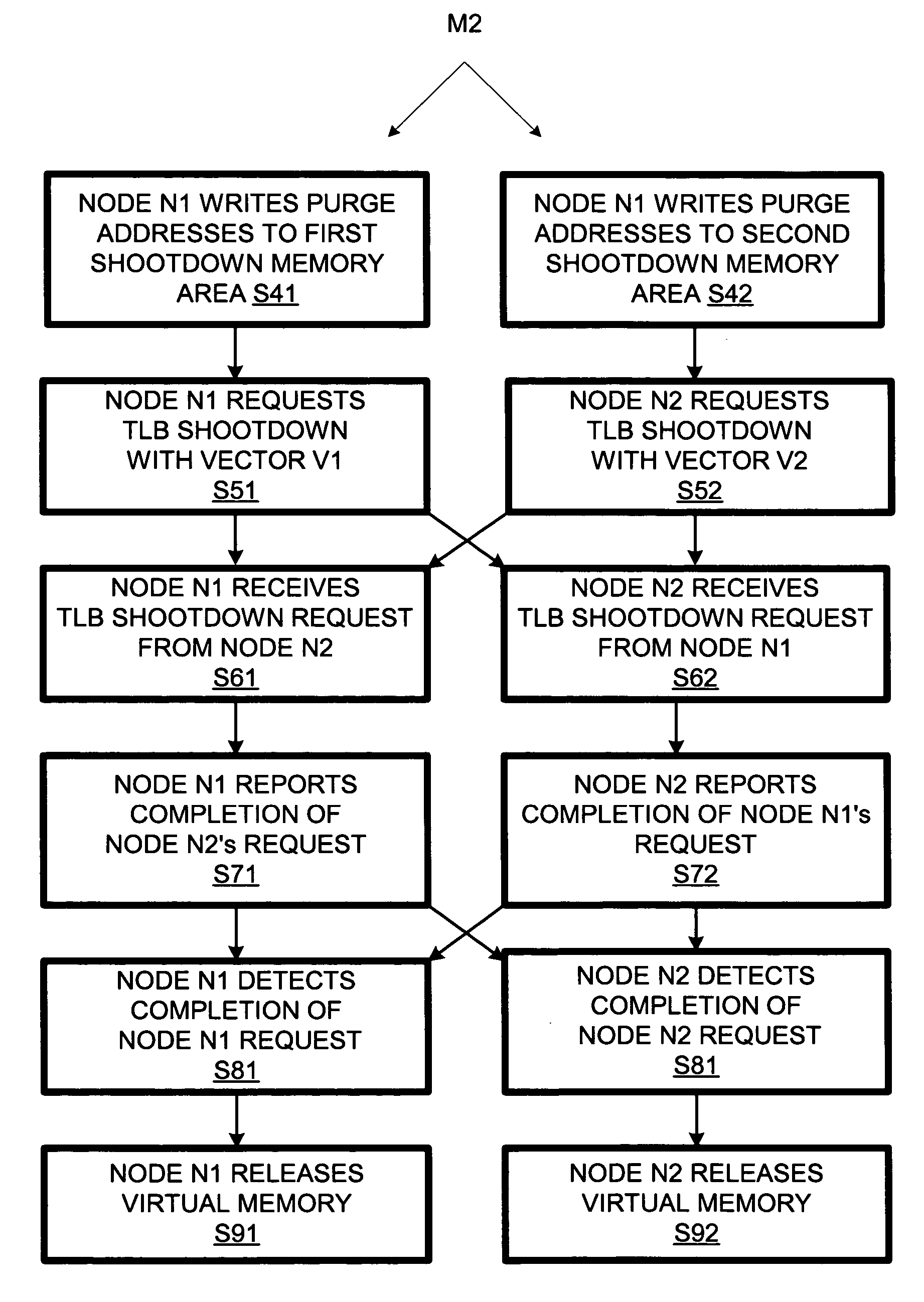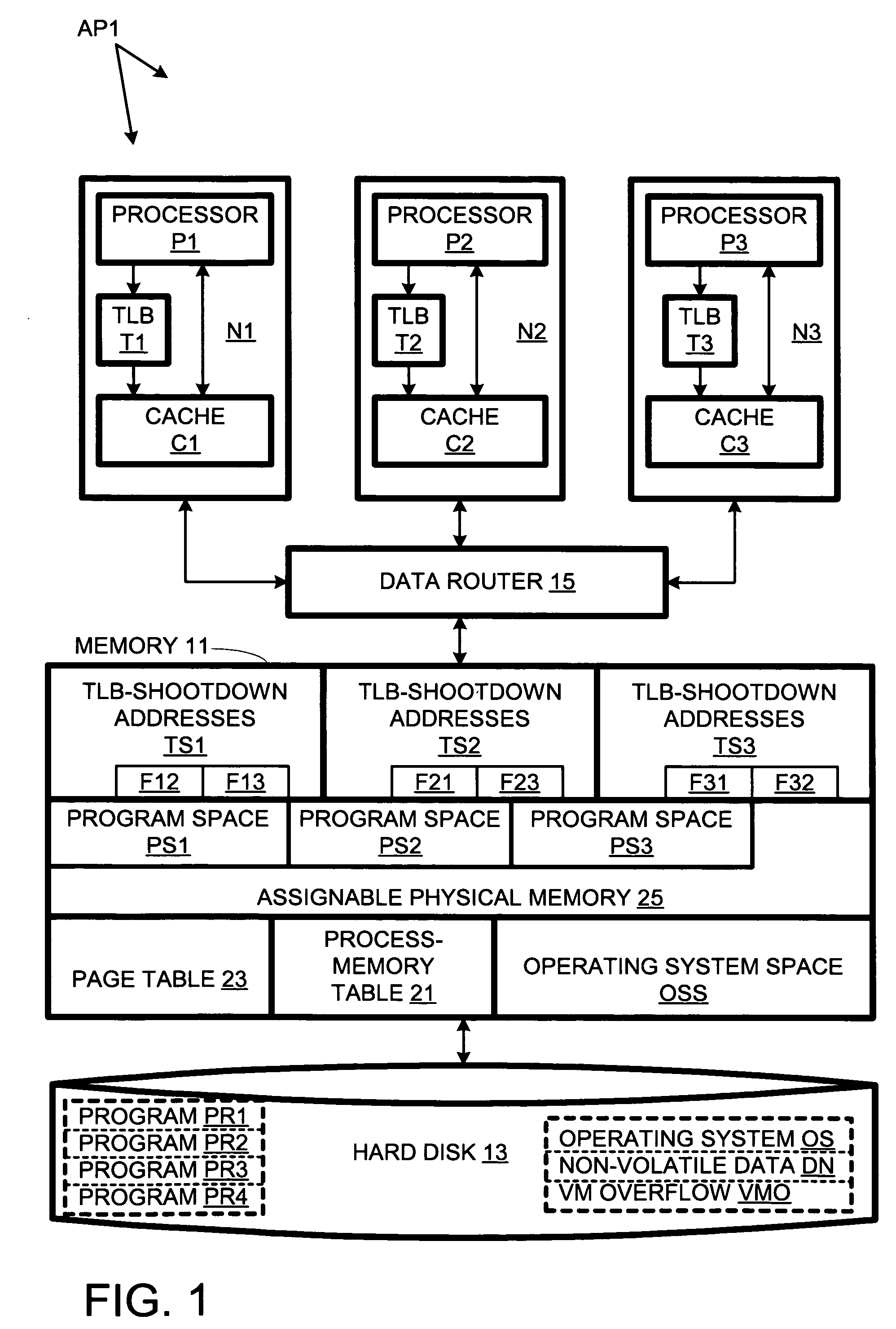Multiprocessor system having plural memory locations for respectively storing TLB-shootdown data for plural processor nodes
a multi-processor system and memory location technology, applied in the computer field, can solve the problems of increasing bandwidth consumption, consuming system bandwidth, and a lot of rechecking
- Summary
- Abstract
- Description
- Claims
- Application Information
AI Technical Summary
Benefits of technology
Problems solved by technology
Method used
Image
Examples
Embodiment Construction
[0011] A multiprocessor computer system AP1 comprises three processor nodes N1, N2, and N3, volatile physical memory 11, a hard disk 13, and a signal router 15. System AP1 includes three nodes, which suffices to explain the invention. However, the marginal advantage of the invention is greater for embodiments with more nodes, e.g., 48 or more. Node N1 includes a processor P1, a TLB T1, and a cache C1. Likewise, node N2 includes a processor P2, a TLB T2, and a cache C2. Also, node N3 includes a processor P3, a TLB T3, and a cache C3. Data communication among processors P1-P3 and between the processors and memory 11 is via signal router 15; in addition, interrupts are transmitted via signal router 15.
[0012] Hard disk 13 provides non-volatile long-term storage for system AP1. It can store an operating system OS, programs including programs PR1-PR4, non-volatile data DN, and overflow virtual-memory pages VMO (when physical memory is too small to fit all requested virtual memory). Upon ...
PUM
 Login to View More
Login to View More Abstract
Description
Claims
Application Information
 Login to View More
Login to View More - R&D
- Intellectual Property
- Life Sciences
- Materials
- Tech Scout
- Unparalleled Data Quality
- Higher Quality Content
- 60% Fewer Hallucinations
Browse by: Latest US Patents, China's latest patents, Technical Efficacy Thesaurus, Application Domain, Technology Topic, Popular Technical Reports.
© 2025 PatSnap. All rights reserved.Legal|Privacy policy|Modern Slavery Act Transparency Statement|Sitemap|About US| Contact US: help@patsnap.com



